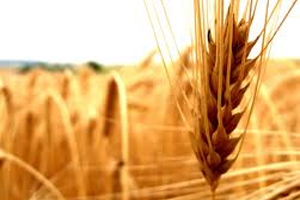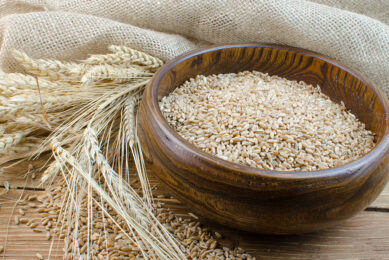Research: Creating drought-tolerant wheat

Scientists at the South Dakota State University (SDSU) are looking at the makeup of Egyptian germplasm as part of a research to develop varieties of wheat that can tolerate drought.
According to molecular biologist Jai Rohila, assistant professor of biology and microbiology, that is the key to making agriculture sustainable in the face of climate change.
The SDSU spring wheat breeding program has never specifically tested its wheat varieties for drought tolerance, according to Karl Glover, associate professor of plant science. “We have material that seems to do well in a dry or hot year,” Glover said, but this could just be because the finishing time occurred before the hot conditions took hold. “At this stage, we are not well prepared for drought conditions in South Dakota,” Rohila said.
Through a two-year $60,000 grant from the U S. Agency for International Development, Rohila has taken the first step toward doing this. He has obtained drought and heat tolerant germplasm from Alexandria University in Egypt.
“Egypt is growing wheat in drought conditions all the time,” Rohila said. For the project which began in 2011, he collaborates with his counterpart, Sanaa Milad of the biotechnology lab at Alexandria University. In recognition of Rohila’s work, he received the award for faculty engagement in international affairs at the SDSU Celebration of Faculty Excellence in February.
“The long-term goal is to discover the genes for drought and heat tolerance and use them in South Dakota wheat improvement program to make our wheat ready for dry or hot years” Rohila explained.
To do this, he and his team analyse the genetic makeup of the Egyptian germplasm and compare it to South Dakota wheat. Two graduate students and two undergraduate students are working on the project.
“We must identity the genes and utilize them for our wheat to make it grow better,” Rohila said.
The process of discovering the genes includes looking at individual proteins that are responsible for the function in a plant cell, Rohila explained. “All this crop improvement occurs because of different genes, proteins and chemicals interact inside the cell to provide it a function, like drought tolerance – it’s not about one gene alone.”
Rohila and his team have identified 96 proteins scattered throughout the plant’s cells, he said “that are differentially expressed in the drought-tolerant wheat.” Now they must determine the effect that these proteins might have on the fitness of individual wheat cells.
“The cell is the centre point of any function; if we can improve the fitness of a cell, we will improve the plant,” Rohila said.
In South Dakota wheat, drought and heat can make the chloroplasts disintegrate and the mitochondria collapse, he explained. Rohila and his team will examine the proteins that act within the chloroplast cells in the Egyptian germplasm, for instance, and try to transfer the characteristics to those cells in South Dakota wheat.
Genetic engineering of wheat in the United States has been limited to research alone, Rohila explained. No genetically modified wheat exists commercially in this country, but he said, “private companies are struggling to make this.” Researchers in Australia have done significant work in this area but have not yet released a variety which can grow in the United States.
Nearly 85% of the corn and 91% of soybeans grown in the United States are genetically modified, according to the Center for Food Safety. These modifications can help crops resist disease and pests and tolerate challenging environmental conditions, including drought. The ultimate goal is to secure food for the world’s growing population.
“What we are doing is making South Dakota capable of that type of research, so when the doors are opened, we are at the front…we can deliver the product,” Rohila said. “If we do not start now, we will lag behind in the game.”
This year Rohila and Glover applied for new funding from the U.S. Department of Agriculture to continue their work. Once Rohila identifies the genes and proteins with significant influence on the drought resistance, Glover will cross the Egyptian germplasm with South Dakota wheat varieties and then screen for those functional gene and protein markers.
“By doing that,” Glover said, “I can create germplasm that should be theoretically as resistant to drought as what he’s identified — developed in and for South Dakota.”
Source: South Dakota State University (SDSU)
Join 26,000+ subscribers
Subscribe to our newsletter to stay updated about all the need-to-know content in the feed sector, three times a week. Beheer
Beheer









 WP Admin
WP Admin  Bewerk bericht
Bewerk bericht